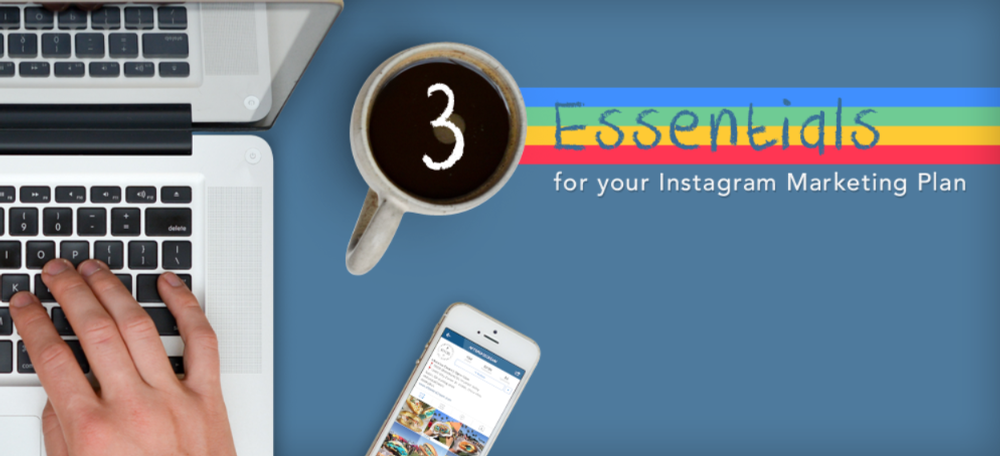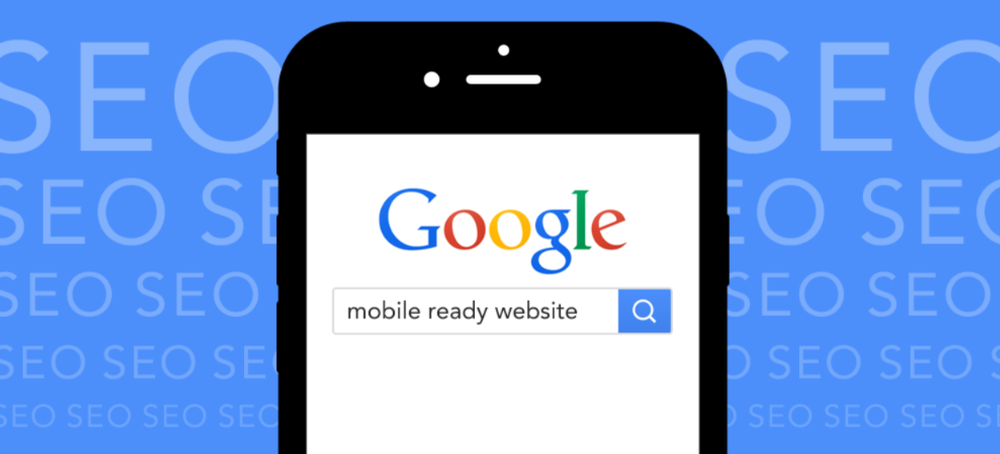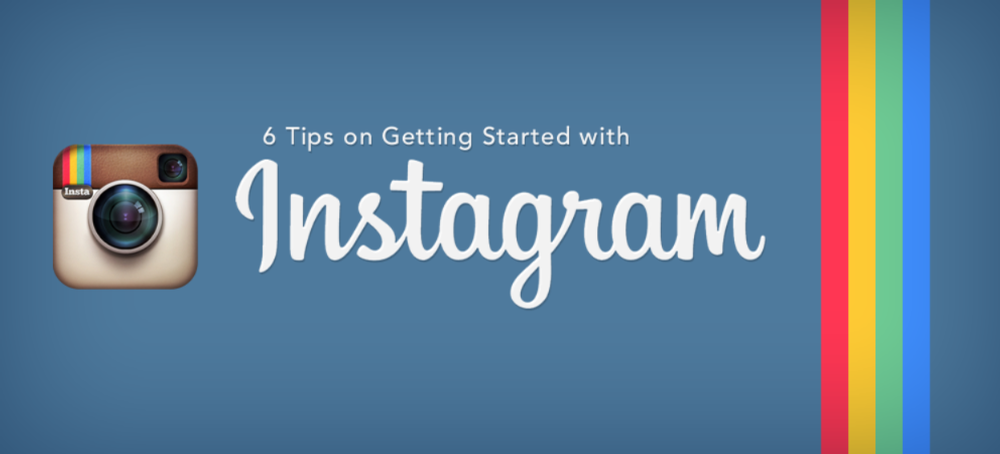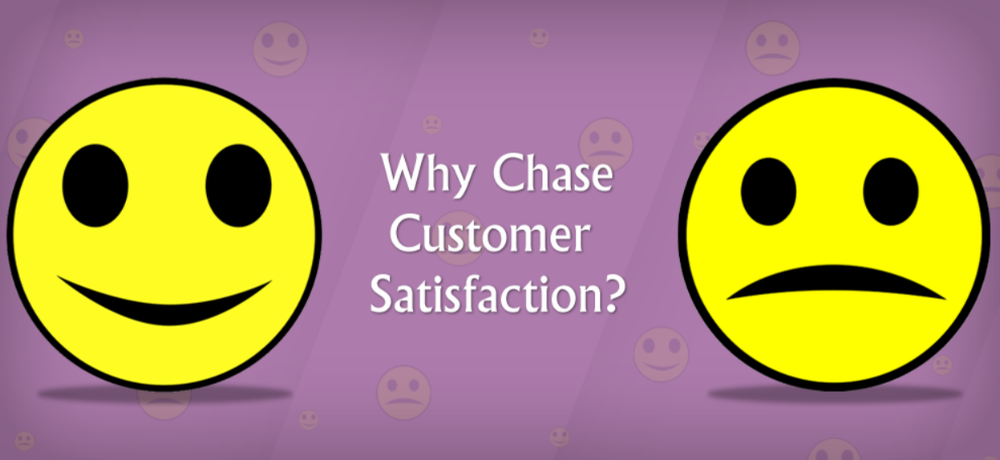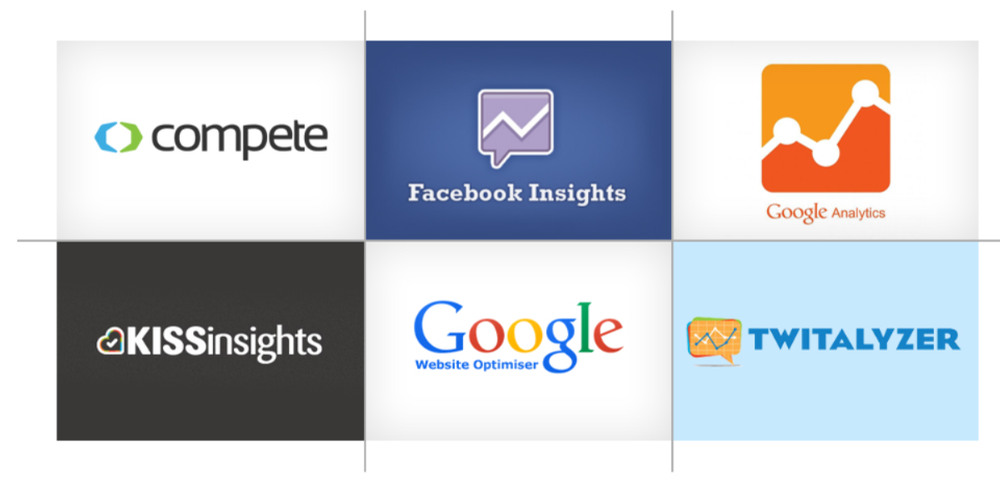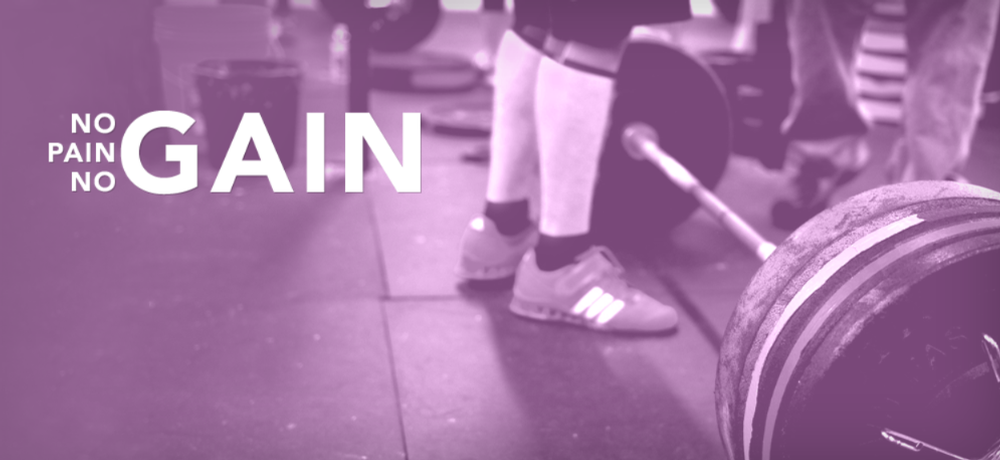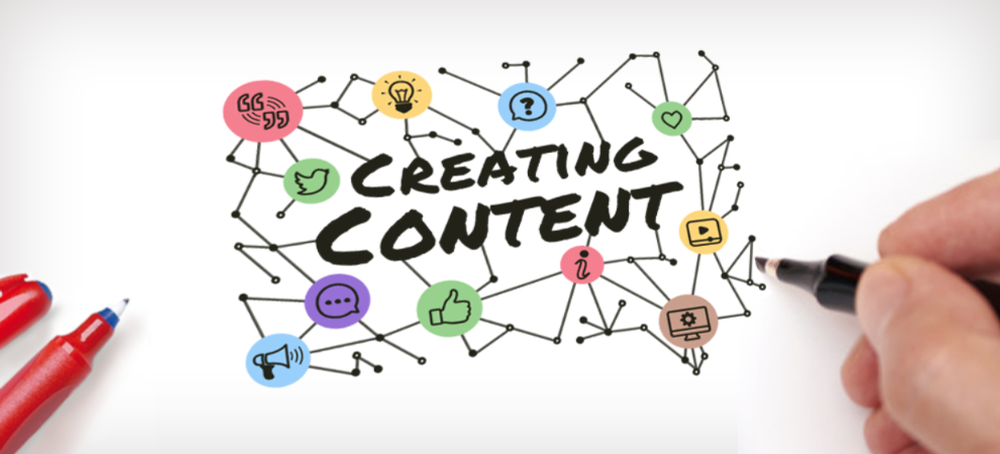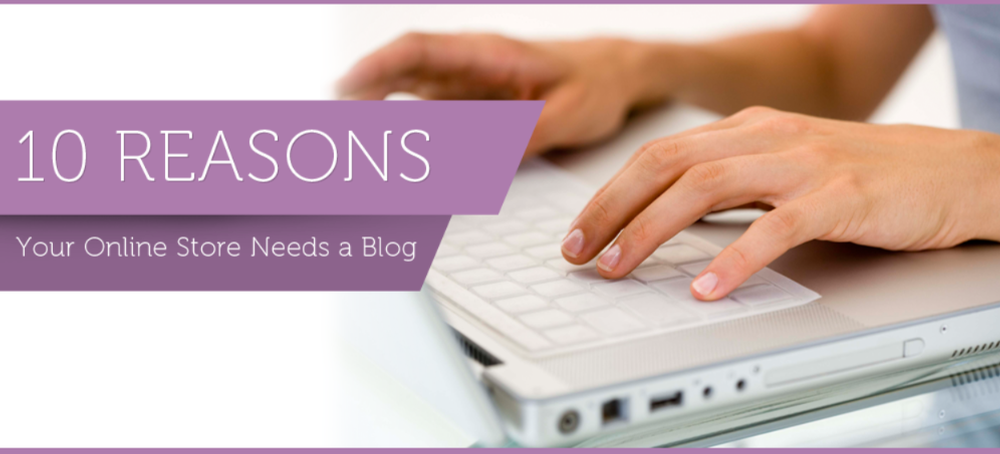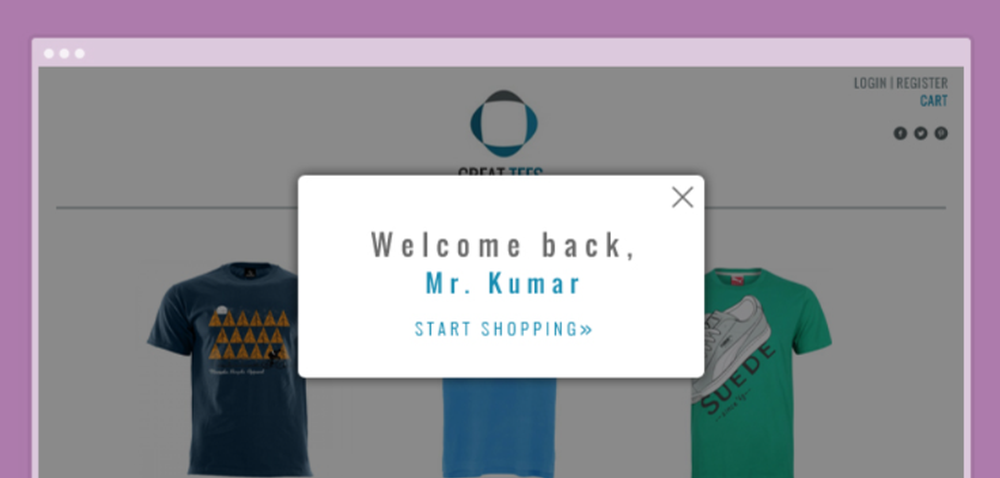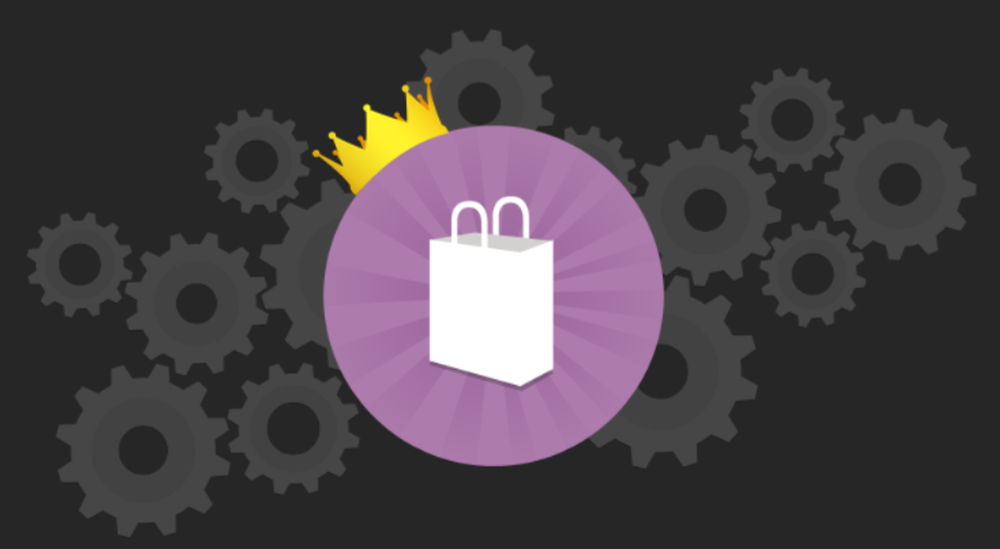Why Reviews Matter for Your Small Business
In this digital age, the value and influence of online reviews is on the rise. Eighty-eight percent of consumers take reviews into account on purchase decisions! Reviews, both positive and negative, can influence your business’s reputation and bottom line. Monitoring what’s being said about your business online is an important part of any digital strategy. Keep reading for a detailed guide on how to make reviews work for your business.
Here’s why your business should care about reviews:
- Trust - 88% of consumers say they trust online reviews as much as personal recommendations. Consumers actively seek out opinions on products/services and studies show consumers highly value peer reviews.
- Visibility / SEO ranking - Businesses with more total reviews and more positive reviews are ranked higher on search engines. For example, Google Maps and Google Mobile Search return the top three businesses nearby with the best ratings and reviews.
- Traffic - The more visibility your business has online, the more likely you are to see an increase in foot and website traffic.
- Conversion - 40% of consumers read reviews on their mobile while at the POS. Positive reviews can close sales and increase overall spending. They can also be a tie-breaker when deciding between establishments so ensure your reviews are accurate and up-to-date.
Ready to get started? Here’s your most important review-related questions answered:
Which review sites should my business use?
The best thing your business can do is find where your competitors are reviewed. Do some research to find which review sites your industry uses to concentrate your effort.
Some popular places to leave and read reviews:
Google Reviews - Google is the most used search engine in the world and specializes in local search. This is a good place to start.
Yelp - This app spans many industries and is go-to search tool for consumers looking for highly rated businesses.
Trip Advisor - If you’re in the hospitality business, TripAdvisor is a well-known and respected website to find reviews
Angie’s List - Mostly for North American based businesses, Angie’s list is ‘higher end’ review site for product and service businesses with guaranteed verified reviews.
Your Website - Add a review widget to your website. Reviews on your own website can increase traffic and sales.
How many reviews does my business need?
Consumers generally read between 4 and 10 reviews before they trust a business. Check out your competitors then aim to stand out from that number. However, consumers are smart and can sniff out fake reviews. If your competitors have 10 reviews and your business has 200, consumers are likely to be weary of your reviews. Aim for a steady increase of one review per month or per quarter.
Can I trick Google with fake reviews?
Absolutely not. Google is well-known for authenticity and will find, then punish, businesses abusing the review system with poor search rankings.
What can I do about bad reviews?
Negative reviews are an opportunity for your business. If you receive a bad review, reach out to the customer. At the minimum, you can apologize for the negative experience and hope they return to your business for another chance to make things right. You can also offer an exchange/refund or discount to compensate for a bad experience. If your business turns the experience into a positive one, you can ask the customer to update their original review or write a new one.
How can I monitor reviews to stay up to date with what people are saying about my business?
Set up Google Alerts to let you know anytime someone says anything about your business. This allows you to respond immediately and provide top-notch customer service.
Ready to get reviewed? How to get reviews:
- First and foremost, DO NOT offer incentives for reviews. This is against most review sites’ policies. Incentivized reviews create mistrust in your customers and will get you booted off review sites.
- Lightly encourage your customers to write reviews. Use your best judgement here. Ask your regulars and satisfied customers. Not everyone will write a review, but if you ask 10 people, you may get 1 quality review.
- Display your reviews inside your establishment. This shows your customers you value their input and may encourage them to add a review as well.
- Establish your online presence. Simply increasing your online visibility can remind customers to write a review.
Word-of-mouth is one of the best forms of advertising. As the digital age’s word-of-mouth, online reviews are a simple, yet effective way to increase traffic, sales, and improve your online reputation. With the increase in value and influence of reviews, a small business can no longer afford to have a poor online reputation. Ensure your small business is up-to-date and reaping the benefits of this essential online tool.
Making the Most of the Holiday Season: 4 Marketing Ideas For the Holidays
The holiday season is upon us! Is your business prepared? The average American consumer is expected to spend over $800 during this holiday season. SMB retailers see 20-30% of their annual business during the last two months of the year. It is essential for you to ensure that your business is able to capitalise on the high rate of spending during the holiday season. An estimated 47% of consumers prefer to shop online compared to the usual brick and mortar stores. In other words, it means is that there is big money to be made this time of the year as far as online shopping and marketing go. But how do you make sure that you and your business are prepared?
Here is where you can start…
1) Start Planning For The Holidays Today
If you have a website or a dedicated blog, begin by updating it to reflect the mood of the ongoing holiday and festivities. If you haven't posted a new article, photo or even a mere promotion in a long time, then this is the time to do it! You can also try pinning one or two colourful banners or even populating it with holiday verbiage. If you run a webstore, then it is an opportune time to start planning what deals and discounts you can offer!
2) Step Up Communication with your Customers
The key to driving traffic and increasing sales during the holiday shopping season is knowing exactly who your customer is and marketing to them well in advance of the holiday season. Businesses that communicate with their customers year-round have more successful holiday marketing campaigns because they took the time to build relationships with shoppers. Incorporate your holiday promotion ideas into a year-round marketing strategy. During the holiday season, focus on your existing customers but also work towards improving your business’ online presence and driving more traffic to your site.
3) Harness the Power of Social Media
It's the holiday season. And as far as the web statistics go, this is the time of the year when social media outlets record the highest amount of traffic per year. Therefore, it goes without saying that if you lay out strategic plans to tap into this traffic, you can easily multiply your mailing list subscriber base within a few weeks or even days! Be accessible on every social media platform and every device. 65% of shoppers use social media to find the perfect gift, so help them find your store. Below are a few ideas for great social media posts during the holiday season:
- Gift guides
- Wish list items
- Creative ways to use your business’s products/services
- Seasons greetings from your staff
- Party planning and event ideas
4) Partner with Other Small Business Owners to Drive Sales
Just like the adage goes, there's indeed strength in numbers. And if you're just starting out (have a new blog, website or social media page), you'll be far much better placed this season if you concentrate most of your effort in pooling your resources together and partner with other local businesses in your area by promoting one another’s products/services during the holiday season. Partnerships with other local businesses will spread awareness about your business to a new audience of highly qualified buyers, e.g. if you own a nail salon, you could partner with a hair salon and offer combined holiday packages.
Now is the time to get working on your holiday marketing plan. Try out one - or all - of these ideas to kick-start this holiday season for your business.
Webware Announces Integration with Fedex
Webware.io is now integrated with Fedex, the world’s largest express transportation company. Webware customers now have access to Fedex’s shipping service right from their Webware workspace.
Enabling Fedex with your Webware website allows you to manage your entire online business from a workspace you already use. Track and fulfill orders right from the same place, your Webware workspace.

Setting up Fedex with your Webware site saves you time too. You won't need to add any shipping rates or setup weight slabs (for example, 1kg = $2.99, 2kg = $4.99, etc). The shipping rate is automatically integrated into your shopping cart during checkout, based on the weight of the items and the zip/postal code entered. This shipping rate includes delivery fees and pickup fees.
Activating Fedex on your Webware website makes shipping easier and streamlines your e-commerce process. Take advantage of Webware’s newest integration and simplify your shipping today!
5 Ways Webware Helps Your Business Succeed
Webware is a leading cloud-based web platform designed for small and medium sized businesses. Businesses can use Webware and our expert support team to design, set up, manage, and grow a website or webstore.
Whether you’re starting an online business, taking your existing business online, or are ready to upgrade your website, Webware has all the key components for a successful digital business, all in one place:
1) Website
A website builds your brand, increases your business’s credibility and, ideally, will bring you more customers. But it’s a lot of work to build and maintain a website, even if you’re outsourcing the work.
Webware's Do-It-For-Me team will design a website to reflect your brand and give your customers an informative and easy-to-use online experience. Here’s how it works:
- The Webware expert team will start from one of our beautiful website templates, get your inputs and preferences, and build a website that fits your business brand and needs.
- Once it's built, you can run and manage the site yourself with our easy-to-use web-based tools.
With Webware, anyone can have a beautiful, mobile-friendly site at the lowest rates available, all within a quick delivery timeframe.
2) Webstore
Want to sell your products online? The Webware Do-It-For-Me Team will deliver a beautifully designed webstore, fully integrated with reputable payment gateways like PayPal and Stripe that support mobile-based transactions.
Site visitors can browse, add to cart, and make payments right from their smartphones, tablets or desktops, using our integrated, straightforward checkout process.
Then you can log into your Webware's Workspace to:
- Manage your products, orders, and customers from one, easy-to-use online Workspace.
- Create coupons to drive more sales and draw in customers.
- Add apps from our App Store for additional features, like customer service chat, surveys and reviews.
- View reports on order activity, visitor stats, and referral sites, so you can keep tabs on your business.

Webware's platform gives you all the tools you need to digitally manage your ecommerce business, from one convenient place.
3) Blog
Blogging significantly increases a website’s SEO and lands your business higher in Google search results. Whether you’re selling online or promoting your business with a website,Webware's blog platform is a great way to increase traffic to your website. It’s also a great place to link to content on your website and products/services on your webstore.

Your customers will experience a seamless transition between your website and blog, while you enjoy the convenience -- and SEO benefits -- of managing both from the same platform.
4) Social Store
Use social media to get your fans onto your website and convert them into buying customers! With the Facebook Store feature on Webware, you can sell your products on your business Facebook page.
Consumers love to research their potential purchases online and frequently ask their social networks for advice. Your Facebook fans can easily view your products on your Facebook page, and share them with their social networks. This will increase your reach and allows you to harness the power of word-of-mouth through social media.

When your fans want more information, or are ready to make a purchase, they click on the product from your Facebook Store and are taken to your website.
Social media is vital to online success - increase your web traffic and engagement with Webware’ Facebook Store.
5) Loyalty Program
Once your fans become customers, it’s important to treat them right to keep them coming back. With Webware's loyalty program, you can award points to customers who register with your website and/or make purchases. And you can decide how customers can redeem their loyalty points. A Loyalty Program helps increase customer satisfaction, customer retention and brand loyalty.
Conclusion
In today’s world, it’s imperative for businesses to have an online presence, and your website is the heart of it all. But a static website alone is not enough.
If you’re selling products online – whether it’s physical products, professional services, or takeout menu items – you need a secure, easy-to-use ecommerce store. And extras like a blog, loyalty program, and social links are now critical elements to success.
And even for those businesses who are not conducting sales online, you still need your customers to find your website, learn about your business, gather the information they need to make an informed decision, and follow your call to action.
Webware's, with our team of experts, will design and setup your online business and give you the tools you need to manage it, all with minimal cost and effort to you. For more info, start a free trial or contact us.
How To Host an Awesome Instagram Contest
This article is the third in a series about marketing on Instagram.
Do you want to boost your Instagram marketing effort? Attract more fans and engage existing followers? Host an Instagram contest! 70% of Instagram users have already participated in a contest on Instagram or would be willing to do so (according to the Iconosquare 2015 Instagram study). Instagrammers enjoy engaging with brands and appreciate companies who value customer interaction. It’s easy to overlook an Instagram contest, but it has proven valuable for small business marketing.
Why host an Instagram contest?
Hosting a contest can increase your followers, likes, and overall engagement. A creative, thoughtful giveaway will reach your target audience and increase your Instagram stats. One contest can create the same interest and engagement as months of your regularly scheduled content. It can also get your customers creating interesting and relevant content for you.
The benefits of a well-executed contest will extend beyond the length of the contest, so it’s important to create a clear plan.
Step 1: Create and plan
Choose the target market, prize, type of contest, and theme.
Target Market: Get a clear idea of who will be interested in your contest, and who you want to participate. Once you have the ideal contest participant in your head, research what they post on Instagram and which hashtags they use to guide you. Targeting the right audience is vital to your contest success.
Prize: Give away an awesome prize. Choose something your followers are going to get really excited about. To keep the focus on your business, make sure the prize is related to you. If you’re a company with one product/service, give that away. If you have a lot of products/services, give a gift card or a dollar value to spend at your business. Webware clients can give away coupon codes and Loyalty Reward Points. This ensures your contest entrants are genuinely interested in your brand. Other options include tickets to trade shows and industry-related events. Decide how the winner will be selected (public/private vote, random selection, your favourite, etc). To continue reaping rewards after the contest is finished, you want to attract those who have potential to be interested in your brand (not someone who is only interested in winning an iPad).
Contest Rules & Structure: Think about how the rules of your contest can help with your marketing strategy. Here are some ideas we recommend.
1. Select an interesting theme related to your business or industry. Get creative with your theme and encourage your followers to have fun.
2. Choose a brand or contest-relevant hashtag that participants must use to enter their posts. This is the best way to have all submissions organized in one place for reposting entries, selecting winners and for people to view all submissions.
3. Content that your customer creates for you has high value. If you want to take advantage of this precious resource, make user-generated content a mandatory qualifier for your contest.
You can host a contest based on likes and/or follows, which means that users who “like” your photo or “follow” you are automatically entered into the contest. This is an easy way to host a contest and doesn’t require much planning. Because it’s simple to enter, it will get you likes and followers. The drawbacks to like/follow contests are that they will attract people who aren’t members of your target audience, and that contestants aren’t creating any content for you to use. This type of contest may not create future engagement on your Instagram feed or in your community.
Other types of contests include reposting or comment-based entry. Entrants must repost your contest photo or comment on one of your posts to qualify for your giveaway. These entry methods have more interaction than like/follow contests but don’t come with the valuable user-created content of a photo contest. You can also use a combination of requirements for entry into your contest. For example, contest entrants must like a photo, follow your brand AND comment on the contest post. However, one of the most common reasons why contests fail is that there are too many requirements for entry. Find a sweet spot between too easy and too difficult to ensure maximum, quality entries.
Helpful Tip - No matter what kind of contest you host, always require a “follow” for entry. This is a simple yet effective way to increase your potential future engagement.
Step 2: Prep fans
Once you've decided on the type of contest, a fun theme and a cool prize, let your customers and followers know about the upcoming opportunity. In the weeks leading up to your contest, give your fans the heads up that soon they can participate to win an amazing prize. Before launch, advertise the contest regularly on social media, email campaigns, your website, and in-store. Use your Instagram bio space to promote the contest while it’s happening. To create some buzz, encourage your fans to spread the word or offer an added incentive to anyone who shares your contest post.
Step 3: Launch
Before you start your contest, ask a friend or two to go through the contest steps from start to finish. How easy or difficult was the entry process? Did you understand the rules and how to qualify? Was the prize motivating? Do you know when it starts, ends, and how the winner is chosen? This will give you an idea of how your contest is received by others and how you can make it easier and more lucrative to participate. On day one of your Instagram contest, give your followers all the info they need to enter. Create an eye-catching post with a high-quality photo of the prize. If you’re giving away a gift card, get creative to keep it interesting! In addition to the prize photo, the post should also include start/end date, qualifications for entry, rules, winner selection, hashtags, and other contest details. Another reason for an unsuccessful contest is misunderstanding how to enter. To avoid losing participants, clearly state how to enter and what to expect.
In addition to the contest-entry hashtag, the launch post should also include other fitting hashtags. Refer to your target audience research in the planning phase to ensure your contest execution is on track. If you’ve been hash tagging for a while, you may already know which general hashtags your target audience follows and uses. Add popular/keyword hashtags relevant to your contest and frequently used by the Instagrammers you want to engage. You can also include general contest hashtags but keep in mind this may attract contest-seekers only. You’ll have more success with general contest hashtags if your contest is easy to enter or appeals to a broad audience. Popular general hashtags are: #contest #photocontest #giveaway #entertowin #contestgram #contestgiveaway #contestday. More on Instagram hashtags for marketing here.
This Instagram contest was hosted by Webware customer My Envy Box, and is a great example of a well hash-tagged contest.

Click here to read Instagram’s requirements for hosting promotions on their app.
Step 4: Maintenance
Give the contest enough running time to garner attention and entries, but not so long that people lose interest. Two to four weeks is the general guideline for an average contest, ensuring ample promotion before the start date. If you’re running a photo contest, you can promote throughout the contest by reposting submissions. Continue to repost even after the winner has been announced, to show appreciation and maintain the connection you established with your fans during the contest.
Conclusion
Carefully crafting and hosting an Instagram contest can boost your social media stats. Get creative and have fun with your followers. Instagrammers appreciate brands who want to get connected and see the world from their customers’ view. Find your like-minded fans and get them thoughtfully engaged with a fun contest!
-------------------------------
Related Articles
We are live with Webware
Today we are releasing webware to the public. We have been running in stealth for the last 6 months with a few special partners around the world.
Webware is a turn key white label platform that allows any company or entrepreneur to provide ecommerce and website services to their customers. Anyone from a bank or mobile telephone company to your local digital services entrepreneur can now offer a branded software as a service platform, charge what they want and keep the customer relationship to themselves.
Help in setting up your webware with these first steps:
2. Customizing your website / signup page
3. Setup your blog and customer communication box in the workspace
3 Essentials for your Instagram Marketing Plan
You already know that marketing is essential for your business. And if you’ve done any marketing for your small business, you also know that social media is an important part of the overall strategy. The photo-sharing app Instagram is a growing force in social media, especially for business. Research shows that Instagrammers love to shop - more than people on Facebook, who use the older social media site mostly to stay connected with friends and family. So if you haven’t already, it’s time to get your business on Instagram.
We’ve covered the basics here, so now that your Instagram business page is up and running, it’s time to make a plan to achieve your marketing goals. This post covers three essentials to include when creating your Instagram marketing strategy.
1. Use Hashtags!
There a lot of ways you can use hashtags to promote your brand and get more followers. First off, some examples of the types of hashtags you’ll want to use.
Trending hashtags - Trending hashtags are the topics that people are currently discussing. They can be trending in a specific community/industry/country or trending across all of Instagram. The use of trending hashtags can help increase your exposure to non-followers. It’s best to use them when you find one related to your business. When that happens, switch out your regularly scheduled post for the trending hashtag to reach like-minded Instagrammers. Last week, #nationalsiblingday was trending. This adorable non-profit in New York City got in on the action.
Top Hashtags – These are the most commonly used hashtags on Instagram. Examples of consistently popular hashtags include #love #picoftheday #fashion #friends #food #repost #beauty.
To see the overall top 100 Instagram hashtags, click here.
To see a sample of top hashtags sorted by industry, click here.
It’s useful to hashtag your posts with one or two popular hashtags to reach non-followers. Use both general and industry-specific hashtags to maximize your reach.
Brand hashtags - It’s almost always best to use your brand name here. For example, #powerstores. In some cases, a short and clever slogan can work (KitKat uses #haveabreak), but it’s best to do some research beforehand. Include your brand hashtag on your profile page so anyone viewing your feed will see it.
Campaign hashtags - Hashtags for marketing campaigns or contests. Choose a short phrase that captures the essence of the campaign. Make a requirement for entering a contest or participating in a campaign.
Keyword hashtags - These are general hashtags used to describe the content of your post. They describe products and lifestyle.
Locations and events - Hashtag your geographical location (country, city, community, neighbourhood etc). Look for and use event/conference hashtags to reach fellow attendees and fans.
General tips on using hashtags - Use between 5 and 10 hashtags per post for maximum exposure. Any more and risk putting your followers off by appearing obnoxious (this goes for posting more than once a day, too). Use a few different types of hashtags to best describe what’s happening in your post. Knowing which ones to use can be tricky, so when getting started, check out what other businesses in your industry are up to on Instagram. Follow industry leaders, businesses you admire, and customers you appreciate. Research a hashtag you’re considering by typing it in the Instagram search field to see how popular it is and what it’s already used for.

For extra help, hashtagify.me lets you search a hashtag then gives you related, popular hashtags. It can help you find trends and recommend additional hashtags that may be relevant to your post.
2. Show Appreciation
As with all social media platforms, a grassroots marketing plan includes engaging with your customers. This is especially true for Instagram. A great tactic to increase overall engagement and attract more followers is customer appreciation. Re-posting followers’ content shows you’re listening and value their outlook on your brand. A popular campaign by Chobani yogurt showcases delicious food creations made with their products, by their customers. They encourage followers to get creative with their product then post the photo with a branded hashtag (#creationaday). Chobani re-posts the photo with a shout-out to the creator.
While showing the love is bound to get you more followers, the value of appreciation goes beyond customer loyalty. Your customer has saved you time by creating valuable content that genuinely shows how your product or service is actually used. It’s also great insight into what people love about your brand.
Instagram doesn’t give you the ability re-share your followers’ content, but Repost and Regram are two popular apps you can download that will. The free versions of these apps add a watermark to re-posted content and paid versions allows multiple Instagram accounts. Check your mobile’s app store to see what’s available.
There are other ways to show appreciation that work. 41% of Instagramers would follow a brand to benefit from special offers. Reward your followers with exclusive promotions, discount codes, sneak-previews of product launches or priority access to new services. Offer giveaways – such as your products/services, tickets to food & beverage shows, fashion shows, concerts, or other events of interest to your fans. Offering quality benefits exclusively to your Instagram followers will encourage them to never miss a post!
3. Measure what works
Don’t let the effort of creating content, researching hashtags and hosting promotions go to waste. You’ll want to measure how each of your strategies affects the number of likes, followers and comments received. Analytics are the key to refining your marketing plan and understanding what works for your business. Then you can make tweaks in response to how different strategies affect your metrics.
Iconosquare is the most recommended analytics tool for Instagram. Get your basic statistics and analytics to hone your marketing plan. Union Metrics offers a free checkup of your Instagram account which will give you a few pieces of valuable information at no cost. Collec.to’s free plan provides the same basic stats. These platforms also offer paid plans to get additional features to manage your Instagram account.
Conclusion
Instagram is great for business because users want to get involved with the companies they buy from. Instagrammers love to engage and are very active on what’s becoming one of the most popular social media apps in the world. Once you incorporate these essentials into your marketing plan, your business will get the most out of Instagram.
------------------------
Related Articles
Make Your Website Mobile-Friendly Now! Google Announces Important SEO Update
Last November, Google announced that it would be labelling and promoting "mobile-friendly websites" in their search results. This was in response to the fact that 80% of Google searches are performed on a mobile device. People are moving away from their desktops and spending more time on smartphones and tablets. As technology improves, mobile devices are getting better at handling tasks which were once reserved for desktop computers.
On April 21, in less than four weeks from now, Google will update its search algorithm to include mobile-friendliness as a ranking factor for websites.
As stated on Google's official blog:
“This change...will have a significant impact in our search results. Consequently, users will find it easier to get relevant, high quality search results that are optimized for their devices.”
If your website or webstore isn’t mobile-friendly by April 21, it will take a big dive in Google’s search results, which could significantly impact your website traffic.
If you’re already a Webware customer, you can rest easy. All of our themes are responsive, automatically giving your website or webstore the “Mobile-Friendly” label. Your business will rank higher in Google’s search and customers will have a hassle-free experience on your website.
Is your website not mobile-friendly? Visit www.webware.io and get a new website!
6 Tips on Getting Started with Instagram for your Business
Instagram is a photo sharing app that has taken the social media space by storm! Users post photos and short videos to share any and all aspects of their lives with friends, family and fans. Before posting photos, Instagram users can easily enhance them using filters. Each filter has a different effect on the photo like adding more contrast, light, shadows, tint or vignette edges, black and white/sepia options. Take a picture with your smartphone, add a filter and share it with the world.
Brands have discovered that Instagram is way to communicate with their current customers and reach potential customers in a fun and unique way. Because Instagram is one of the top ten most popular smartphone apps, it’s an easy way to reach your customers and target market. Create a buzz around your product and engage your community to increase brand awareness and loyalty with this popular and growing photo sharing tool.
As part of a three-part blog series on Instagram, here are some basic guidelines to get your business’s Instagram account started off on the right foot.
1) Communicate your brand consistently.
What is your business hoping to achieve with Instagram? More followers? Increased product sales? Brand awareness? Know what your main objectives are and work toward them with every single post.
Instagram is a great way to visually communicate your brand’s values through relevant, eye-catching images. These posts can be funny, inspirational, educational, or simply beautiful to look at, as long as they promote your brand image and align with your business goals.
2) Connect your Instagram account with any other social media you use.
Facebook and Twitter will automatically repost your Instagram photos to your existing fans and followers. Link all of your accounts and let all of your social networks know you’re on Instagram to build your initial following.
Learn how to link your social networks and more on linking to your Facebook page.
3) Post a good mix of business and fun images.
Business images promote your products and show them in action. These are a great way to start a conversation about your product and interact with your customers. However, your followers will get bored by seeing posts that only promote products and feel sales-pitchy. Connect with your followers on a personal level. Share the faces behind your company at work and play. Your followers will appreciate an inside glimpse of your company’s day-to-day life and culture.
 |
 |
4) Use #Hashtags.
This is the best way for non-followers to find your photos. Hashtags are words or phrases used to categorize posts making them searchable by subject. For example, if you take a photo of a beach and add the hashtag #beach, it will come up in an Instagram search by anyone looking for beach-related posts.
Use hashtags to describe your post and further convey your brand’s message, and it will help increase visibility of your photos.
5) Time your posts for the most engagement.
Post consistently, when your followers are likely to have down-time. Don’t post too often, once a day with a purposeful message is enough to engage your followers.
6) Engage with your followers.
Reply to comments on your posts. Like, comment and re-post your followers’ posts to build brand loyalty and attract new followers and potential customers.
These beginner tips will help get you started with your first posts and create a foundation for your business’s Instagram presence. Stay tuned to the Webware blog to learn more about using Instagram for your business. Future posts will cover marketing with Instagram, tools to help you get the most out of Instagram, and integrating Instagram with your website/webstore. Happy Instagramming!
-------------------------------
Related Articles
Top 5 Reasons Why Customer Satisfaction is Astonishingly Important
Most owners of online stores typically run extensive promotions and marketing campaigns to capitalise on the festive season at the end of the year, and watch with delight as their sales volume soars. You are likely one of them.
Now that you have set up your promotions and campaigns for the peak shopping season, it’s time to focus on another equally important element for success - Customer Satisfaction!
If you had any reason to wonder just how important customer satisfaction is to your ecommerce business, we have compiled the top 5 reasons just for you!
1.Satisfied customers are the ones who return
As obvious as it may sound, it’s important to always keep in mind that only those customers who are satisfied with your products and service are likely to return for more. Of course, not every satisfied customer will become a repeat customer, but it’s almost certain that a dissatisfied customer will never return, especially given the large variety of options available in today’s highly competitive market.
2. Returning customers are cheaper to retain than acquiring new customers
If you’ve ever run a successful marketing campaign, you are well aware of the high cost of customer acquisition. The cost involved in getting a satisfied customer to return to your website is a lot cheaper than the marketing spend required to acquire new customers. One thing successful businesses have in common the world over is a high volume of returning customers. And, as I’ve already said, the only customers who are likely to return are the satisfied ones.
3. You can make it part of your brand’s Unique Selling Proposition (USP)
As you already know, in today’s highly competitive market, customers have a number of businesses to chose from to satisfy the exact same need. Good customer service can often become one of a brand’s USPs that customers take into account when making their choice. Price is of course an important differentiator, especially for first-time customers - but research has shown that very often, people are willing to pay a slightly higher price for better customer service.
4. It leads to customer loyalty, increasing Customer Lifetime Value
The more frequently a customer returns to your store, the more value he or she creates for you. Your Sale Cost reduces with regard to that customer, while your Sale Value keeps increasing. The longer you can keep a customer satisfied, the more you stand to gain from them.
5. It affects your Online Brand Reputation
Research shows that more and more online buyers are depending upon product reviews and customer testimonials to make their purchase decisions. The more positive reviews you have, the higher your chances of acquiring a sale. On the other hand, negative reviews will turn away customers in a devastatingly efficient way. So when you start getting those great customer reviews, be sure to post them on your website for all to see!
Conclusion: It's Worth It!
With these important reasons in mind, be sure you go the extra mile to please your customers. Fulfil your orders quickly, communicate well with your customers, ensure your products are high quality and well packaged – all with a goal of ensuring the highest levels of customer satisfaction. You'll be glad you did it! And your customers will too!
Get your Online Store to show on Google Search Results
After you get your business online, the first thing you’ll likely want is to have people find it. One way to do this is advertising and marketing, for sure. But one critical (and free) step you should do right away -- once your website is ready and optimized for SEO -- is to index your site with Google, so that people can find your site through search.
Think for a minute about how you shop online. You search for the product you want in a search engine like Google, and then click on links that show up as results. So you need YOUR business to show up for people who are looking for YOUR products and services in the same way.
As we’ve said before, Google is by far the most popular search engine today, with 67%+ of all searches happening there, so it makes sense to focus your attention on Google’s search engine. You can make sure your site shows up on Google quickly by indexing it.
What is indexing?
It’s a way of telling Google that your website exists. Google’s search bot may eventually find and index your site, but you really have no idea how long it will take, it could take weeks or more. So this is a way to speed up that process.
How to index your site with Google
Here are the steps:
1) Go to Google Webmaster Tools site. You will need to sign in with a Google Account. If you don’t already have one, you will need to create one.
2) Click on the ‘Add a Site’ button and submit your website URL.
3) You will be given different options to verify that you are the owner of the site. The easiest option is to choose the “HTML tag” option under “Alternate Methods”. You will be given a code that you need to copy-paste in the meta tag of your home page.

Webware clients, to paste the HTML tag into your homepage, go to Website > Site Pages in your workspace and select “Home” page, or ask your Guru for help with this.
4) Once the site is verified, you will get an email from Google that looks like this:

This email will help you set up your Google Webmaster Account.
If you are unsure of how to do the set up, there are helpful links to explain the whole process in easy-to-follow-steps. Whether you make use of the other options or not, be sure to submit the sitemap of your online store.
Once you have set up your account, your website, along with all its pages, will get indexed by Google soon thereafter. And once your site is indexed, it will show up in search results for searches that are relevant to your business.
How is indexing different from SEO?
SEO is about page rank, which is the next step. First, your site needs to be indexed.
Note that indexing does not guarantee your website will appear on the first page of Google search results. It only guarantees that it WILL show up on relevant search results. It won’t be missed.
For a new website, it’s highly unlikely you will show up on the first page right from the start. You need to work on your SEO to get it moving up the Page Rank, hopefully to the first page, for your most important keywords.
Conclusion
Indexing your site with Google is a key and simple first step to getting your site noticed by Google's search engine.
Webware customers, we’re now offering an SEO marketing package, where we will make sure that your site has all the right title tags and meta descriptions, and we will take care of indexing your site on Google for you. Contact support@powerstores.com or your Guru for more information!
Tools for Marketing Analytics at your Fingertips!
We have talked about why online businesses need Marketing Analytics and what kind of data to look for in Marketing Analytics. Now, let’s look at some specific tools that you can use to gain insight into the performance of your website as well as marketing campaigns.
1) Google Analytics
Google Analytics is one of the best website analytics tools, and it’s free! You can gain insight into many different parameters related to user behaviour on your website, such as:
- Deep insights into your audience - where they are coming from, their demographics and interests, the devices they use, etc.
- An overview of their usage of your site - number of pages, time spent, etc.
- Tracking your social marketing campaigns and how much traffic they have brought to the site, and
- Details of all sales on your website, to help you identify marketing strategies that work.
Google Analytics also offers real-time analytics, in-page analytics and visitor flow visualisation that can have a deep impact on understanding how well the website is performing and which elements need to be improved.
2) Compete
Compete is a paid tool and its prices vary based on the types of features you need. Compete offers comprehensive information on keywords that attract your target audience to your website as well as your competitors’ websites. Such information can be very useful in creating advertising campaigns that provide a high Return On Investment (ROI).
You can also find out where viewer came from and where they go, for both your website and those of your competitors. This can help you identify the best referral websites to place your ads or content on as well as understand how customers behave when they leave the website.
3) Google Analytics Content Experiments
Formerly known as Google Website Optimizer, Content Experiments is now part of Google Analytics. Content Experiments enable you to test all different segments of your website to identify the best options. For instance, you can try different layouts, images and content on different pages of your website in rotation and easily find out which ones or which combinations perform better than the others. This will help ensure that all elements on your website are as optimised as possible.
4) KISSinsights
KISSinsights is a free survey tool offered by KISSmetrics. It enables you to reach out to your customers directly and get answers to important questions like:
- What are visitors attempting to do on your website?
- Are they able to do it or not?
- How satisfied are they?
KISSinsights is an extremely simple survey tool, and its best advantage is that it’s short and does not impose on your visitors for too long, while providing you with the most important insights you need into their opinion and experience of your website.
5) Social Media Tools
Let’s look at tools for two of the most popular social networks: Facebook and Twitter
Facebook: Page Insights
If you have a Facebook Page for your Brand, Page Insights can provide you with a whole lot of information about it.
You will find the Insights tab in the top left corner of your Facebook Page.

Here you will get deep insight into the Likes your Page has received, your Posts that have been popular, the kind of audience your page attracts and their ages, genders and locations. Such information can be very useful in targeting your Facebook ads and promotions.
Twitter: Twitalyzer
Similar to Facebook Insights, Twitalyzer offers comprehensive insight into your number of followers, retweet insights, how often a specific account replies or engages with your brand on your Twitter feed, and more.
Conclusion
As you can see, these are tools that assist you in every aspect of your online presence and engagement - your website, your audience and your social networks. Using these tools will provide you with all the data you need to ensure the best performance of your brand on every net property.
Related Articles
Top 5 Reasons Why Marketing Analytics is Critical to Your Success
No Pain No Gain: No Longer True for Building A Website
‘No Pain, No Gain’ seems to be the way things go for everything in life, whether it’s a fitness program or even an online business. No matter what it is we want to achieve, we have to endure a painful ordeal to get it, right?
Let’s look at all the hassles you will have to go through (or already have gone through) when you want to build an ecommerce store and/or take your business online.
PAIN #1: Finding the right designer
You need someone who can translate your vision for your website in a web-ready design, while keeping in mind all branding requirements.
PAIN #2: Finding the right developer
Then you need to find a website developer who can translate the visual design into a functioning website, keeping in mind user experience and functionality.
PAIN #3: Finding the right domain-selling and hosting company
You need to decide where to buy your website’s domain name from and on whose servers you will host your website. Understanding the choices and all the features offered requires major time spent just educating yourself on all of it.
PAIN #4: Finding the right payment gateway
If you’re selling online, you have to choose a payment gateway that is right for you, based on many different technical and non-technical parameters, then have your web developer integrate it with your website.
PAIN #5: Finding the right vendor for site maintenance
Once your site is ready and launched, you will need someone who will update and maintain your website on a regular basis. Often, the developer who built your site has then disappeared when it comes time to make changes!
PAIN #6: Finding the right fulfillment partner
Finally, if you’re shipping products to customers, you will also need to find the right logistics partner and then negotiate with him to offer you a reasonable deal.
THE BIGGEST PAIN: The Cost
More than anything else, you will need to start with a large capital investment to pay for all the above-mentioned professionals and expenses.
It is easy to see why so many people are put off by the thought of taking their business online.
But imagine if this process was not as convoluted or as expensive as it is right now… Would you let anything stop you from breaking the Internet barrier and offering your goods and services to the large number of shopping buyers online?
Meet Webware.
Webware is a DIY Online Store Builder. We believe that ecommerce has the power to transform the lives of small business owners, and that it should be as easy as possible for them to have a great website where they can promote their business and sell products. That’s why we’ve created an extremely easy-to-use platform that’s as effortless as managing your Facebook page.
With Webware, you get pain-free access to:
- Create your own professional-looking website yourself in a matter of minutes using our beautiful website themes. And they're all free, even the mobile responsive ones.
- Or you can have us build it for you in a matter of days, at about one-third the cost you’d pay a web developer!
- Try out many different designs, colors and other elements of look-and-feel of the website, as many times as you want until you have a website that you like - and it’s all for free!
- Web hosting on blazing-fast Amazon servers. And the hosting cost is included in your highly affordable monthly subscription.
- The best Payment Gateways available, like PayPal and Stripe, pre-integrated into your website. Just enter your merchant account info and you’re ready to accept payments for orders.
- Webware tie-ups with several logistics partners to help you find the right fulfillment partners at reasonable rates.
- Finally, Webware is such a simple platform to manage that you will be able to make any and all changes to your online store on your own. You’ll never have to rely on a developer again!
Webware offers a host of other features that make it easier for you to manage your website easily, like:
- Easy web-based tools to manage orders, update product info, and communicate with customers
- Integration with social media platforms like Facebook and Twitter
- Discount coupons and Loyalty programs
- Search Engine Optimization (SEO) friendly
- Blog platform hosted right on your site
- App Store with a wide range of third-party apps to plug into your site
Webware does not require any upfront or setup fees, so you avoid a large upfront capital investment, plus the monthly subscription prices that you pay are also extremely affordable. Check out our Pricing Page to see for yourself!
So, what are you waiting for? Join hands with Webware, and say good-bye to the pains of cobbling together a website and chasing elusive and expensive web developers! Set up your online store in minutes and watch as your business grows online!
Using Marketing Analytics to Make The Right Decisions
Our recent blog post took a look at why you need marketing analytics and how it can help you streamline your marketing efforts. Here, we’ll explore what kind of data you need to study and how it can guide your marketing decisions.
Let’s consider what kind of data you need to mine from marketing analytics.
Website Performance: What to Track
You will have visitors coming to your online store from many different places, like Facebook, Twitter, blog, email links, organic search, Google Ads, etc. Website Analytics will not only help you indentify which channels of incoming traffic are leading to conversions (ie sales), but will also provide a large amount of valuable data like conversion rate, lifetime customer value, and cost per acquisition.
These figures can give you meaningful insight into what is performing effectively and what isn’t, thus helping you to decide how to allocate your marketing budget across various channels.
Sales: What worked?
Focus on actual sales and conversions on your website. Go as far back as possible in users’ behavior to track down the path of clicks from how they entered to your online store all the way up to actual sales. Did a click from a text ad on Google search bring the sale? Or was it a link on Facebook? Maybe discount coupons in emails led to terrific sales!
Find out everything you can about what worked. If you compile enough data, you will start to see trends and be able to identify which channels work better than others in bringing in sales. You will also find out what kind of products the user was interested in and you can target your ads accordingly using remarketing tools. (Read more in our blog post covering remarketing).
Offline and Online Metrics: Consider Them Together
If your marketing strategy includes both online and offline marketing, it is important to ensure that the data record does not get interrupted in-between. So, for instance, if you advertise in a local newspaper or you give out leaflets with discount coupon codes on it, it is important that you keep records of these channels so that you can later combine both the online and the offline records to get a holistic picture of how well your marketing efforts are creating conversions on your online store.
There are many ways of doing this. For instance, in the case of discount coupon codes, create a separate coupon code for different channels, e.g. your Facebook ad can have the code FB123, while the code in your emails can be EM123. You can then look at the records of which codes were used to get an idea which channel was more effective in bringing in sales.
Vanity Metrics: What to Avoid
There are lots of metrics available that do not add any meaningful insight into what helps the bottom line. But easy availability of these metrics makes it very easy to get distracted by them. These metrics are called Vanity Metrics and they include elements like page views, time spent on site, number of pages visited, etc. These numbers do not add any value to your marketing strategy and are best avoided, to save time.
Social Media: Keeping a Bird’s Eye View
If there are any social media networks, like Facebook or Twitter, that you use to market your online store, it is important you use marketing analytics tools to keep a bird’s eye view of your performance there. You need not pay attention to every single like and share, but it is important to know where your audience is coming from whether the network is leading to website visitors and especially buyers, the demographic breakdown of customers who found your website through social media, etc. There are many tools that can make it easy for you to access this data, e.g. Google Analytics.
We will provide more in-depth information on various tools that can help you get the right Marketing Analytics data in our next post in this series. In the meantime, you can start identifying the most critical types of data you are going to need with regard to your own marketing efforts. Watch this space for more!
Related Articles
Top 5 Reasons Why Marketing Analytics is Critical to Your Success
10 Tips on Writing Content for your Blog
So you have decided to start a company blog on your online store/ website to drive more traffic, promote your business and engage your target audience. But what should you write on your blog? What kind of content is considered appropriate for a business blog? And, how to create content that will benefit your brand as well as your bottom-line in the long run?
Here are 10 ideas on what to post on your company blog:
1. Tell your Story: People are inherently interested in stories, and you can use your own story to develop interest in your brand. Talk about how you got the idea, how you met your collaborators, how you came to start your business, etc. If there are some really interesting facets to your brand, talk about them - the designers, the craftsmen, the techniques, etc. Introduce the people on your team, talk about their dreams and aspirations. The more people get interested in your brand, the more they will care about it.
2. Make Announcements: Whatever announcements you may have with regard to your brand- whether it is a new product launch, a new collection, a season-ending sale, use your blog to make these announcements. The blog provides a whole new channel as well as attracts a different section of your target audience.
3. Answer your Customers’ Questions: There is an important caveat here and that is ‘before they ask them’. You are surely aware of your target audiences’needs, concerns, demands, questions, etc. with reference to your products. Address these issues long before they actually come up. Use your blog to provide all the relevant information your potential clients are likely to need with reference to your brand, company and products.
4. Educate your Customers: Apart from pre-empting the questions your potential customers may have while buying your product, you can also use your blog to educate your customers in using your product most effectively and efficiently. If you have any guides, tutorials, how-to videos, etc. post them on your blog. Not only can you use this as a ready resource when your clients make a purchase, you also develop a reputation for being concerned with customer satisfaction.
5. Get Customer Feedback: Undoubtedly, a lot of market research goes into product development. You already know what your customers want and you have developed a product to fulfill that need. How about finding out exactly how your customers will respond to your products BEFORE you launch them? Use your blog to provide sneak previews of your products and get feedback on them from the very people who are going to be using them. You will have time for fixes, changes and troubleshooting before the launch, should the need arise.
6. Create a Platform for your Customers: Use your blog to create a space dedicated to your customers. Add their pics taken with your products, post their comments and testimonials, answer questions that they may have, link to blogs they may have written about you. Your blog can become a community space to help create a community of your customers.
7. Provide Industry News and Information: This is your opportunity to establish yourself as an industry expert. Report and remark on important industry news, identify and analyse trends that you see, write your opinions on how your industry can create a greater impact.
8. Create Engagement: Fun engagement opportunities can bring tons of traffic to your blog if done right. For instance, run a photo or a caption contest on your blog. Announce the contest, provide all the rules and guidelines, keep updating the page throughout the duration of the contest and announce the winners of the contest on your blog. Use other social media networks like Facebook and emails to promote such contests. Watch as traffic increases and your brand awareness builds.
9. Follow Relevant Blogs for Ideas: Look for the market leaders and thought leaders in your industry and follow their blogs. Of course, you never want to plagiarize their content, but you can easily find out what the industry is talking about, concerned with, aspiring to, etc. and use these ideas as a starting place for your own blog post.
10. Entertain: Use your blog as a space to provide relevant entertainment to your target audience. If you find a comic strip, a funny video or a quirky experience with regards to your product, brand or industry, post in on your blog so you and your target audience can share a laugh together and bond over it.
Now, you have the secret to creating the best possible content for your business blog. Once you get going on your blog, you’ll get better at knowing what works and what doesn’t, and it’ll come as second nature to think of new post ideas. So go ahead and blog, and you’ll be interacting with your target audience in ways that were not possible before!
Note: Webware customers, go here to read about how to add a blog to your Webware today!
Related Articles
Top 10 Reasons Why Your Online Store Needs a Blog
Do you have an online store? Then, you need a blog! Blogging is one of the most critical channels available to your business to attract new audiences, engage them, retain them, create brand loyalty, and in the long run, make your business profitable and successful.
If you were looking for one good reason to start a blog for your online store, we give you 10!
1. No-Pressure Communication: Your website needs to sell your products your ads need to drive traffic, your Facebook posts need to go viral, but your blog offers respite from these pressures and allows you to communicate whatever it is that you think might interest your target audience- news, updates, industry information, tips, company values and philosophy, tutorials, guidelines, the people behind the scenes, history and tradition associated with your products and services…. And the list goes on & on!
2. Two-Way Channel: A blog offers a platform for your target audience to engage in a meaningful conversation with you that goes beyond a ‘like’, a ‘re-tweet’ or a ‘re-pin’. A blog with a comments section offers a place to share ideas and have discussions with people who matter the most to you – your existing and potential customers.
3. Fuel for SEO: Regular updates, relevant & original content and additional tags are all things that get search engine algorithms to rank your website higher on relevant searches. Blogs also generate a lot of inbound links when they get shared- another plus for SEO.
4. Content for Social Media Marketing: The content you generate on your blog is the perfect material to share on Facebook, Twitter, LinkedIn, Newsletters, etc. These links will further help your SEO efforts.
5. Long Term Results: Most blog posts continue to produce results for years, as long as the information you have provided is original and relevant. Research shows that unlike news, blog posts are often read and referred to months, even years after they have been posted.
6. Establish Credibility and Expertise: A blog is a great way for you to establish your credibility and expertise as a thought leader in your industry. The more this perception increases, the easier it will be for your target audience to trust you and give you their business.
7. Build a Brand: Blogs go a long way in building a brand because they provide the perfect platform to share the story behind the brand. Human beings love stories and can relate to a company better if they have insight into the brand that runs deeper than just the products and services they provide.
8. Create Symbiotic Relationships: Blogs are a great way of building mutually beneficial relationships with other complementary brands and thought leaders. For example, if you sell cookware, you should easily exchange links with a recipe website and blog. This is beneficial to everyone involved - both for the brands as well as for the readers of both blogs.
9. Get Insight: While the blog provides your readers insight into your brand, it also provides you an insight into your target audience. By analyzing popular topics, clicks, shares, comments, etc. on your blog, you can gain deep insights into the needs, likes, preferences, etc. of your readers. This can go a long way in strengthening your overall marketing strategy.
10. It’s Easy! If you already run an online store, managing a blog is likely to be a breeze for you! You need no technical expertise to create and maintain a good-looking, easy-to-navigate blog. All you really need is just good content and appealing pictures to go with it.
Note: Webware customers, go here to read about how to add a blog to your Webware today!
Top 5 Ways to Promote your Online Business Offline
So, you have set up your online store. And you are keen to spread the word and have more and more people find out about your online store. Apart from online advertising and marketing, is there anything else you can do to promote your online store? Of course!
Here are the top 5 ways you can promote your online store offline:
1. Printed Stationary
Add your online store URL on all your printed materials. Like visiting cards, your letterhead,and envelopes, invoices, receipts, packing, and labeling. Ensure that your website URL is always present when your brand name, logo or contact details appear in print.
2. Your Physical Store
If you have a brick-and-mortar store, then you already have an excellent venue to promote your online store. For most of your existing customers, an online store will be an added convenience and they are likely to take to it enthusiastically. Add your online store URL to all your signage - outside your store, window dressing, direction boards, announcement boards, etc. If your business requires your employees to wear a uniform or ID badge, add your online store’s web address on the uniform or badge. And put the URL on the shopping bags!
3. Outdoor Signage
On the other hand, if you do not have an actual store, you can still find ways to post signage for your online store. Make use of signposts and other locations where signs are required. You can piggyback on signs for existing landmarks, by offering to pay for painting the sign and adding your brand name and URL in return.
4. Promotional Items
Many businesses invest in creating and gifting promotional items to their customers, vendors, investors, shareholders and potential customers on various occasions like festivals, anniversaries, etc. If you are one of those businesses, you now have one more vehicle to promote your online store! Add your online store URL to all promotional items and watch more and more people find out about your online business.
5. Pass out Leaflets
This is another great way to promote your store offline. Make brochures, leaflets, posters, catalogues, etc. for distribution and pass them out at locations where your target audience is likely to be found in large numbers, like the shopping mall, or the multiplex. This will be especially useful if your business is local and you cater to customers in a fixed geographical location.
So, now you have some great, cost-effective methods of promoting your online store in the offline world. Go out and try them all, then focus on the one that gives you the best results. All the best!
Top 5 Reasons why Marketing Analytics is Critical to your Success
Marketing Analytics? What it is? Why do you need to pay any attention to it? It’s not as if online sellers are not already bombarded with enough jargon to make their heads spin!
Simply put, Marketing Analytics is analyzing the results of your marketing campaigns. You may be marketing your online store through various online channels like Facebook marketing, Google advertising, blogging, email marketing, etc. Marketing Analytics helps you analyze the results of each so that you can ensure that you are getting the best value, or the highest Return on Investment (ROI) for the time, effort and money you are spending on various marketing initiatives. Here are top 5 reasons why Marketing Analytics is critical to your success.
1. Identifying what Works:
Not all channels produce the same results. Some may bring in a lot of traffic, others may lead to higher sales, while other channels may not be adding much value to you at all. By employing Marketing Analytics, you can easily identify which channel works best for each goal.
2. Streamlining your Marketing Goals:
What is more important to you right now? Is yours a new online store that requires brand awareness and high traffic, irrespective of sales? Or do you want to focus on sales, and you’re not really concerned with many new people discover your website? Marketing Analytics will help you streamline your goals based on the kind of results each of your marketing channels is capable of producing.
3. Making the Right Investments
Most new online businesses have limited resources, so it’s extremely valuable to know how to invest those resources to get the maximum value. Once you have streamlined your goals and identified the strengths and weaknesses of all your marketing channels, you will find it a lot easier to decide which marketing channels to invest your time, effort and money into.
4. Save Money & Avoid Unnecessary Costs
If you have figured out which channels are most important to you, you can either completely stop or dramatically reduce your other marketing channels. This way, you can ensure that your resources and budget are not being wasted on initiatives that don’t contribute to the goals you are pursuing.
5. Have a Ready Toolkit
Once you have associated every channel with the type of results they are capable of producing, you have at your fingertips a ready toolkit for the future. Now going forward, no matter what short-term or long-term goal you want to achieve, you will always have ready knowledge of which marketing channel to employ to meet that specific goal.
Important Note:
It is important to also understand that online marketing is a highly dynamic field which is affected by a number of factors like seasonality, industry trends, new technology, quality of content, marketing expertise, etc. You will need to factor in these changes, trends and updates into your Marketing Analytics to ensure that you have an accurate understanding of all your marketing channels and their ability to produce specific results.
Watch this blog for more posts on this topic, including more specifics on how exactly to gather and analyze the data you have access to, for the most insightful Marketing Analytics for your business.
Related Articles
5 Basic Tips on Getting the Right Content for your Facebook Page
If you have an online business and are like most, you’ve also set up a Facebook Page to promote your business on social media. Setting up the Page is easy, but knowing what to post there is the hard part.
Do you see posts “go viral” on Facebook and want to know what to post on your own Page that can get the same level of exposure? Do you see other Pages get hundreds of ‘Likes’ for each and every post and wonder what their secret is? Exactly how do you determine what is the right kind of content you should be posting?!
Fret not! Here are some tips to guide you in choosing the right blend of content for your Facebook Page.
Remember these 5 things and you’ll be on your way to great posts with lots of likes:
1. It’s a Brand Page
First things first - your Facebook Page is your Brand Page. It should only contain content that is relevant to your company and your brand. This is not the place to post personal posts, opinions, rants, etc.
2. A Brand is Different from Products
While products form a very important aspect of Brand Identity, there are other elements to consider as well, like brand philosophy, vision, influences, accomplishments, press coverage, etc. Of course, you will need to post about your products, sales, news arrivals, etc., but your Facebook Page should also encompass all these aspects of your Brand Identity and not just be a catalogue of products that your company sells.
3. A Brand Belongs to an Industry
Your brand also belongs to a larger fraternity - your industry. Including news, trends, changes, etc. about your industry on your Page is a great way to be a part of the bigger picture and keep your fans informed of the larger factors that affect your industry, as well as news that your fans are likely to find interesting. For instance, if you sell organic products, posting news that a well-liked celebrity has endorsed an organic lifestyle can give you great mileage.
4. Know Your Target Audience
Just like in Advertising, the most important thing to keep in mind is your target audience. It is important to understand all sections of your target audience and know what they like. If you are selling sarees to women, think about the various activities and occasions where women like to dress up, and tailor your posts accordingly. If you are selling tees to the youth, think of their various influences – music, celebrities, etc. - and post about them. If you are selling electronic gadgets to young employees, talk about how your gadgets will help save time, improve productivity, increase efficiency, help them stay connected, etc.
5. Images Get Attention
In this age of information overload, you have very little time to connect with your target audience. Web users on social networks do not typically spend more than a few seconds on a post on their Facebook News Feed before moving on to the next one. If your post has only text, chances are people will not take the time to read it. On the other hand, if you post a great picture of something that your Target Audience is likely to be attracted to, chances are that it will attract their attention immediately.
Here you go! Follow these 5 Basic Tips to find the right blend of content to post on your Brand’s Facebook Page and see how many likes and shares each of your posts is able to generate!
Step-by-Step Guide to Promoting your Business on Facebook
So you’ve created a Facebook Page for your business, and now what? You might be thinking, how does this translate into getting more sales on my website? What do I do with this page? How can I get more “likes” and more engagement with my “fans”?
Facebook offers some great tools to help you get more out of your page. By just putting a fraction of your marketing budget towards the following actions, you should see some exciting results. Let’s take a quick look.
1. Boost Your Posts
When you post something on your page, not all your Facebook Page fans are going to see it every time. You can see this in the notification you get under the post, with regards to how many people were reached. You need to “boost” your post to ensure that it reaches all your fans. The good news is that this also exposes your post to the friends of your fans, who are likely to become your new fans, given that friends often have many shared interests.
So, how to Boost your Facebook Page Posts?
- Every time you post an update on your Facebook Page, you’ll see the option ‘Boost Post’ under the post.

- Clicking this button will allow you to choose the amount of money and the number of days you want to boost your post for.
- The number of people who will see your boosted post will depend upon your chosen budget. The approximate number of viewers is provided to you when you select the budget.
2. Promote Your Page
Given the very social and casual atmosphere of Facebook, many brands (depending upon the products they sell) try to first attract their target audience to their Facebook Page to give them a taste of the culture their brand promotes. Instead of directly trying to sell products while people are busy socializing, brands often attempt to create desirability of the brand and products before attempting to get them to go to their website to make a purchase.
So, how do you get your target audience to your Facebook Page? By Using ‘Promote Page’ option! Here’s how:
- At the top right corner of your Page, you will see a drop down menu under Build Audience. One of the options is “Promote Page”.

- When you click on “Promote Page”, a dialogue box opens which allows you to choose the defining characteristics of your target audience like: Target country, Interests, Age, Gender, etc.
- Choose these options based on the profile of your target audience as well as the reach of your brand. For example: If you sell formal women’s clothing in India, you will choose “India” as target country, gender as “women”, age as “22+” and interests such as “fashion”, “clothing”, “formal wear”, etc.
3. Advertise on Facebook
Facebook also offers an advertising platform called “Ads Manager”. This feature provides you with far more detailed targeting options.
Here’s how to use Facebook’s Ads Manager:
- At the top right corner of your Page, you will see a drop down menu under “Build Audience”. One of the options is “Use Ads Manager”.

- Start a new ad campaign by clicking on “Create Ad”.

- You will get a variety of campaign type options to choose from, eg: Page Likes, Clicks to Website, Website Conversion, etc. Make your choices based on the results you wish your campaign to produce. If this is your first Facebook ad campaign and you don’t have too many “likes” on your page yet, we recommend starting off with “Page Likes” option. This will help attract more people to your brand and help make your Page more vibrant and dynamic.

- After this, you will get the opportunity to add photos, add a tag line to the image as well as write an ad text.
- Once you have created your ad, you will get detailed targeting options including country, age, education, preference, etc. of your target audience. Make your choices based on the kind of people you think are most likely to be interested in buying your products. We recommend you limit your geographic focus to India, so that you can get more with your budget.
- Finally, choose the budget as well as the duration of your ad campaign.
- Then click “Submit” and your campaign will start!
- To follow the performance of your campaign once it starts, go to the Ads Manager and click on the campaign name.
So there! Now you know all the techniques required to promote your brand on Facebook! So, what are you waiting for? Go ahead and try these techniques to attract your target audience to your brand and watch your sales grow!
In an upcoming post, we will offer tips on what kind of content to post on your Facebook Page and how to keep your audience engaged. Be sure to look out for that blog post coming soon!
UPDATE 8/8/2014: Our post on creating the right kind of content for your Facebook Page is now up, read it here!
Top 5 Ways to Personalise your Online Store to Create a Brand Identity
So you have decided to set up an online store! Congratulations and welcome to the world of ecommerce! Have you stopped to think about how you will personalize your online store to reflect your business? In other words, have you considered the importance of creating a brand identity?
Why does Brand Identity Matter?
In today’s world, where comparison-shopping is a norm and consumers are likely to look any many different online stores before they make a purchase, it has become more important than ever to have a distinct brand identity. With a strong brand identity, you will stand out from your competition. This is what will ensure not only top-of-mind brand recall by online shoppers, but will also eventually lead to brand loyalty.
What constitutes Brand Identity in an Online Store?
Let’s first look at all the elements that constitute Brand Identity when it comes to a website. What are the things that distinguish your ecommerce store from that of your competitors, apart from your specific inventory? The answer would be: 1. Logo 2. Banner 3. Colours 4. Look and Feel 5. Site Architecture Now let’s look at why each of these elements is important and how it contributes to your Brand Identity. We'll use the website of Zeus Motorcycle Gear, a Webware customer, to illustrate our points.

1. Logo
Your company’s logo is a visual representation of your identity. It offers a glimpse into the values and philosophy of your company as well as its aspirations. A logo also helps distinguish one company from another, in much the same way that a face helps distinguish one person from another. That is why it is important that you put in substantial effort to create a smart, professional logo that will actually be able to represent your company and its ideology in full, with an eye-catching and professional-looking image that you display on every page of your online store.
2. Homepage Banner
First off, we want to stress that your home page banner image (or images) are changeable and, in fact, should be changed often to promote different products and promotions, and to keep your home page fresh and interesting for returning customers. So in general, here are some tips on the types of images you should use in your banner space. It is important to remember that:
- images make a deeper impression on people than text, and
- your banner image is going to be the first, and most likely, the largest image a visitor is going to see when they land on your online store home page.
For these reasons, it is important that ALL your banner images are consistently able to wow your site visitors. They should be original, unique and highly representative of the company’s standards in terms of quality as well as values. Don't just use the default images that come with your theme. You should really take time and effort (and hire outside designers if necessary) to personalise your online store with exciting and beautiful banners.
3. Colours
This is perhaps the easiest and one of the most effective methods of distinguishing your online store and creating a "personality" for your brand. If you choose distinct colours for your brand and use them consistently across all your communications like your website, visiting cards, letterheads, invoices, labelling, packaging, etc., your customers as well as any visitors who land on your website will come to associate those colours with your brand. Such brand associations can become very valuable both in the short and the long term. So it's important that you choose your brand colours with care, and that you use these colours consistently on your online store as well as your offline mediums.
4. Look and Feel
The ‘Look and Feel’ of your e-commerce website represents the essence and quality of your brand and products. In the case of Zeus Motorcycle, their website has a look and feel that reflects their brand -- masculine and action-packed. On the other hand, if you are selling traditional sarees for example, you’ll likely want your website to have a more vintage, authoritative and artistic look. Aside from colours, the elements that contribute the most to the look and feel of your online store are:
- Most importantly, your website template (or “theme”)
- Fonts, font sizing and spacing
- Images and image sizes
- Image-to-text ratio
It is important that you create a look and feel for your store that is right for your brand and your product catalog, because this is the background against which your products are being showcased, and they should complement each other.
5. Site Architecture
This one seems like an unusual entry into a list about personalising your online store to create a brand identity. In fact, it is a very critical element. Your site architecture determines how easy and effortless it is for the visitor to browse your site and find the products they are looking for. A visitor’s experience while visiting your online store is going to play a large role in how they perceive your brand. In today’s day and age when people are shopping online more and more, people tend to remember and frequent those online stores that make their shopping experience easy and hassle-free. A good e-commerce site should have:
- Easy-to-navigate product categories
- Products grouped in logical categories (think about how your customers would browse in a real-world store)
- Use of sub-categories if there are many products (ie Men/Women/Children, then each of these would have Shirts/Pants/Shoes subcategories)
- A product search bar
Ensuring that your online store has the right site architecture goes a long way in creating brand loyalty because your site visitors will have a positive shopping experience.
Now you try it!
When you set up your online store, be sure to personalise your website with a logo, colours, fonts, and banner images that reflect your brand. From the start, when choosing your theme, always keep your brand in mind. Even if you haven’t thought in terms of brand identity before, the fact is that these elements will make a big difference in how people perceive your company and products, and it will affect whether or not they choose to do business with you. So, take the time and effort to make the right choices, always keeping in mind how you want customers to think and feel about your brand and your business. And here’s wishing you all the success in the world!
New Webware Features!
Since our release of Webware 2 in February, we’ve gotten so much great positive feedback on our new platform. We’ve also received requests for even more features from our customers, and we’re listening!
Our team of developers are hard at work improving our platform and adding features. Here are some new features that we’ve recently implemented.
Photo Uploader Enhancements
Now it’s easy to upload beautiful photos to your Webware, even from your mobile phone! We have two great improvements to our photo uploader that make the process simple and the outcome stunning.
1) Upload your image from anywhere. When you’re uploading a photo, you can now grab your photos from anywhere, including Dropbox, Instagram and more, and easily import them to your online store. Have a great pic on your mobile phone or on Facebook that you want to use? No problem!

2) And edit your photo right there. Once you’ve uploaded your snap, you can make it look beautiful in seconds with stunning filters, frames, stickers, touch-up tools and more from Aviary. Edit your image right there -- including cropping, resizing, and special effects – and your image will be updated automatically.

More Currencies Supported
We’ve added support for two new currencies, the Singapore dollar and Hong Kong dollar. As we’re expanding our customer base across the world, we will continue to add support for more and more currencies.
We now support all of these currencies for purchases on Webware online stores:
- Canadian Dollar (CAD)
- Euro (EUR)
- Hong Kong Dollar (HKD)
- Indian Rupee (INR)
- Russian Ruble (RUB)
- Singapore Dollar (SGD)
- US Dollar (USD)
- United Kingdom Pound (GBP)
New Themes
We have three new responsive themes: Sushi Delight, Contemporary, and Fashionist. Each of these themes is mobile-responsive, so your online store will look great on all devices and screen sizes. We’re continuing to add new themes every month!
Webware customers, it’s easy to change your store’s theme. For complete instructions, read our support article on Changing Your Theme.
Automatic Upgrades
As always, all software upgrades are done seamlessly and automatically and do not require any action on the part of our merchants. It’s all part of why Webware is so great!
Our #1 priority is to help our customers create successful online businesses. We hope that these new features help you to get there. And thanks for your support!
5 Ways Customer Registration Adds To Your Profits
What is the best way to ensure that the bottom line of your online store goes from strength to strength? Why, make sure that you build customer loyalty! If a solid chunk of your revenues comes from the same customers giving you repeat business over and over again, then all the new customers you add over time only help in increasing your profits!
Let’s look at how you can ensure brand loyalty by using one simple tool: Customer Registration on your Online Store.
1. Use their contact info to contact them: The first and the most obvious advantage of customer registration is that customers give you their contact info. This gives you the means to contact them every time you have exciting news for them, e.g. New Arrivals, End of Season Sale, Special Discounts, etc. Statistics show that emailers continue to be highly effective (check out our blog post that talks about this in detail.) So, not only do you help cause immediate sales, you also create top-of-the-mind brand recall amongst your customers who get your emailers regularly.
2. Make their experience easy and hassle-free: When customers register on your online store, one of the biggest advantages is that they only need to save all their details like contact info, shipping address, etc. one time. The next time they log in and make a purchase, this information gets auto-filled. This may not seem like a big thing, but habits of online users are changing and people are beginning to shop online more and more often. Even something simple as this removes the hassle of entering the same information over and over again and adds to a positive customer experience.
3. Create a database of their order history for them: What do you have to do if you want to tally your credit card statement with the purchases you have made online? Most likely, search and look through records of these transactions in your email, right? Make this process effortless for them by providing your customers with their order history at your online store. This will help them keep tabs on their purchases and make it easy to cross-reference them at any time.
4. Create Loyalty using a Loyalty Program: All credit cards and most major online stores got this right a long time back. Reward your customers for spending and give them incentive to spend more and more with you. Offer your customers reward points for every purchase they make based on the value of the purchase and make these points redeemable. Your customers now have a solid incentive to spend at your online store and accumulate these reward points so that they can get a large discount on a highly-priced item. You are not only getting them to spend more, you are likely up-selling your inventory, too! Read more on loyalty programs in this blog post.
5. Pamper them with Exclusive Privileges: A fun member benefit you can offer is to make pages of your website accessible to ‘Members Only’. On these pages, you can give your registered customers a highly exclusive preview of your hottest new arrivals with an opportunity to buy them before everyone else does! This works particularly well when you offer items that are limited in number. You can also offer your members exclusive discounts on these ‘Members Only’ pages, giving them further incentive to shop at your online store.
It may seem daunting at first, but really it is not very difficult to create brand loyalty. We are all creatures of habit and once we get used to something like a certain web store, it is just a lot easier to return there than to find one’s way through a whole new website.
Of course there will be people who will look for the cheapest possible deal for each and every purchase. But for most regular online shoppers, familiarity, ease of use, and small savings on time and effort go a long way in building brand loyalty.
And when you add exclusive discounts, exclusive privileges and rewards points to the mix (as benefits of being a registered customer), you can make your online store tantalisingly tempting to your customer base!
9 Simple Steps to Making Loyalty Rewards Programs Work
If you’ve already started your online store, you have probably learned that it takes some effort and money to acquire a new customer. So how does one KEEP a customer, get him or her to return often, and even better, spread the word about your store to others?
Needless to say, a customer’s experience with your store, the products you have on offer and your pricing are big factors in driving repeat purchase. But there is one more important business tactic you should have – a Customer Rewards Program.
Here are some tips on how you can implement a points-based Loyalty Rewards Program and how to make it truly effective, especially for small retailers.
1. Make it worthwhile to collect points
The points have to be redeemed for the customer to enjoy her rewards. So make it possible for her to earn enough points from two or three average value purchases to get a tangible saving on the third or fourth purchase. For a low value item 10% savings don’t work, it should be at least 20%. But for a Rs. 1000 item, a saving of Rs. 100 is sweet.
2. Make it easy to figure out the value of points earned
Keep the maths simple. Each point is worth Rs. 10, or 10 points are worth Rs. 1. Don’t have complicated formulas.
3. Offer starter points for customer registration
You want customers to register for your store for many reasons – that allows you to add them to your email mailing list, collect data on their purchases and track repeat visits. So you can encourage them to register by offering points on registration. It also gives them a nice balance of points right from the beginning, which will excite them to return to your site to earn more points and to redeem their points.
4. Play with the points values to drive purchases of specific products
If you want to specifically promote select merchandise, give a higher number of points as compared to similarly priced products. And don’t forget to advertise the offer, alongside the promoted product or even on your homepage.
5. Reward customers for helping promote your store
Customers who like your Facebook page or recommend your store to others are friends you don’t want to lose. So reward them for every friendly action with bonus points.
6. Have seasons or days when you run Points Multipliers
Instead of giving discounts away, give points away on special days and festivals. For example, earn 50% more points on Women’s Day and for the fortnight leading up to Deepawali.
7. Give away bonus points on special occasions
Present a customer with some bonus points on her birthday, or even on your store’s birthday. Send her a nice email on that day to announce it. The unexpectedness of such a gift usually works well to build a special bond which can lead to a repeat purchase.
8. Give your points a name that links to your store
Suppose your store is called The Baby Store and sells things for babies. You can call your points Baby Steps. So when a momma earns 10 points for her purchase she gets a message saying "Congratulations, you earned 10 Baby Steps for your last purchase!" It helps in standing out from the many loyalty programs that are running.
9. Talk about your rewards program!
Remember, the sense of reward is felt when the points are redeemed. So remind your customers that the points are there! Notify customers who have a certain number of points by sending them reminder emails, and suggest purchases they can make using their points. Communicate when points are earned. Build it into the invoice and the confirmation email you send. Display “points earned” and “points required to purchase” on your product pages.
Using a points-based Loyalty Program is a great way to keep customers coming back to your store and to encourage behaviours you want, like member registration and more. Think of all the places where you’re enrolled in Loyalty Programs – airlines, credit cards, supermarkets, the local coffee shop – and how it influences your purchase decisions. If you could make your online store a place where people want to keep coming back, why wouldn’t you?
Be Inspired: Cory York, CEO of Webware tells his story
Cory York, CEO Webware tell his inspiring story of ambition, determination and success against all odds. Read and be inspired!
The all-in-one platform that gives your business a web presence you're proud of without the headache you’re used to.







